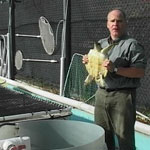Around autumn of 2002, a regular common-room conversation with a colleague in my erstwhile workplace prodded me to get close to people who were till then nothing but one among the myriad names of tribes I had heard of – the Singphos. It was then that I came to know that the Singphos living near Tinsukia were fatally addicted to opium. Other tribes residing in the area bordering Myanmar, viz. the Khamtis, Noktes and Tangsas were also addicted to opium, but the rate of addiction was very high among the Singphos.
Digging history, I recalled that tea is a gift to the country by the Singpho tribe. The connection between tea and this tribe was not unknown to me, but it was a revelation to learn that my very own paternal great-great grandfather, Maniram Dewan was instrumental in taking Major Robert Bruce of the Maratha Regiment of the East India Company to Bisa Gam, the Singpho chief who introduced tea plants to him. We had always read that Maniram Dewan introduced tea to the British. It was then I knew how he did so! The Singphos knew about the existence of tea and were also drinking it much before its official discovery. It is said that on not being paid royalty, the Singpho Chief ordered the chopping of the plants grown by the new plantation and that resulted in the technique of pruning of tea bushes.
It was so important at that point to know the origin of this tribe that historians like Gait and Mackenzie had to come to my aid. However, nothing much was learnt about their earliest origins as the Singphos have no written-history. Folklore traces the origin of the Singphos, who were of Mongoloid descent, to the Singra-boom hills of Tibet from where they migrated in groups to China, Myanmar and the rest came over to settle in the foothills of Upper Assam, in the Dihing Patkai region. Due to the atrocities by the Burmese upon them and subsequent famine, the Singphos entered into the eastern part of India presently known as Dehing Patkai region. Thus, the real home of the Singphos is in the hilly country between the Chindwin river and the Patkai, where they are known as Kakhyens or Kaku. They assumed the name ‘Singpho’ on spreading into the Assam Valley, which in their language means ‘man’. The Singpho community is agriculture based. Both joint and nuclear families exist. They are Buddhists, believing in spirits. The exogamous Singphos are divided into a number of clans, each under a chief known as a Gam. The principal Gams include the Bessa, Duffa, Luttao, Luttora, Tesari, Mirip, Lophae, Lutong and Magrong. The Singphos are also divided into four classes, namely Shangai, Myung, Lubrung and Mirip.
They are said to have made their first appearance in Assam during the rebellion of the Muttack or Moamaria sect against Gaurinath Singha (1780-95) in about 1793. Their first settlements were on the Tengapani, east of Sadiya, and on the Buridihing river in the tract called Namrup, and they not only met with no opposition from the scattered and harassed Assamese population of the tract, but were well received as an element of strength to assist the inhabitants to hold their own. A ferocious tribe by nature, they attacked the Assamese and made them slaves, taking advantage of the Moamaria rebellion. The British subdued them after long rebellions and since then they were not disposed to trouble.
In Assam the Singphos inhabit mainly in three districts namely Tinsukia, Sivasagar and Golaghat districts. There are 31 Singpho inhabited villages in Assam at present according to the survey report of Singpho Ginra Development and Welfare Organisation (NGO). The villages are Dibong, Inthong, Ketetong, Kuatuga, Pangna, Ulup, Hasak, Bisa, Namdeng, Toklong, Duwarmara, Tinisuti, Pangsun, Kumsai, Kotha, Jagun, Mungang, Nthem, Macheyga, Bhitor Powai, Panbari, Longa, Khalega, Umban, Khathangkha, Ouguri, Dhigali, Pohukatia, Rangmai, Rajabari and Nawjan. The Singphos in Tinsukia district are mostly original Singphos, in Sivasagar and Jorhat districts are mostly Duonia Singphos (mix of original Singphos and their Assamese female slaves), in Golaghat and N.C.Hills (Karbi Anglong) districts are mostly Turung Singphos. In Arunachal Pradesh the Singphos are found in Lohit and Changlang districts. The Singpho inhabited villages of Arunachal Pradesh are Namphai, Miao Singpho, Pisi, Gagam, Ningrang, Lewang, Hamuk, Phup, Bordumsa, Wakhetna, Goju, Dirakna, Gidingna, Gallinja, Balijan, Kheremkha, Wagun-1,2,3&4, Dapkhu, Saimo, Kherem Bisa, Deobil, Ning-ru, Wagun, Namsai Singpho, N-den, N-phum, Munglang, Namgoi, Unbang, Project, Insha, Tingwa, Innao, Dragna, Payong, Sikao, Duleng, Wakro, Tezo Singpho, Imbu, Dimaba and Kharsang Singpho.
Assam was known in the past as the “black spot” of India, owing to the heavy consumption of opium, both oral and smoking. The Singphos have been inveterate opium eaters, which can be attributed in part to their culture, nature of their territory and British policy. The ancestors of the Singphos in Myanmar (the ‘Kachins’) were known to have used opium from early times. So this evil practice was also prevalent among the Singphos of Assam and Arunachal Pradesh. Modern medical science entered late or has not yet fully entered the Singpho territory. So, in order to get rid of different diseases like malaria, dysentery, tuberculosis, typhoid etc., the Singphos must have resorted to opium. Moreover, the British must have had the idea of subjugating the fiery Singphos by benumbing them under the influence of this habit when they introduced extensive opium cultivation in Assam towards the last part of the 18th century. Taking advantage of prevalence of opium in the Singpho culture, the British accentuated the habit among the tribe!
The next year, as I kept probing more, I found news in bits and pieces. Most of the people of the villages in the Singpho belt in Assam like Dibang, Ketetong, Pangna, Ulup, Ingthem, Mungang, Pangsun, Hasak, Katha, Bisa and Kumsai were becoming victims of opium addiction. The 1994 Indo-Myanmar Agreement, which came into force in 1995, allowed citizens of each side free access within 40 kilometres of each territory enabled easier smuggling and access of such drugs to the youths in particular, thus triggering the problem further. Extreme abuse of opium was reported since 1997, especially in the villages of Pangsun and Kumsai, where almost 80 percent of the youths are addicts.
It was sad to read about the deterioration of the economy with Singpho people selling off their properties for the sake of buying opium, about the Singpho youths giving up studies and some of them unwilling to work in the paddy field after becoming victims of opium. In 2003, a news reporter was told by two Singpho youths that a minimum of Rs.200-300 a day was required to buy the daily opium quota. Those two youths seemed to have picked up the habit while attending a Singpho festival in Burma.
The Singphos generally consume ‘clothed opium’ which is reportedly supplied from five districts of Arunachal Pradesh and bordering areas of Burma to Margherita. Many of the addicts smoke opium by wooden and bamboo pots known as Doba, although injection of needles fed with opium is also used. Most of these addicts take twenty grams, or even higher amounts of opium. Sometimes people take raw opium to get fast kick. My colleague added that poor access to health facilities make some Singpho women consume opium mostly to overcome their abdominal pains. The universal whiff of opium is given to infants to lull them to sleep so that the household chores can go on uninterruptedly. Several farmers consume opium before going to the paddy field for extra energy to work for longer hours.
I was alarmed to learn that this pernicious habit was severely harming the fertility among the tribesmen. The Singpho population dwindled from 50,000 in 1950 to around 25,000. In 2004, I got to know that according to local people, there are about 17,000 opium addicts in and around Margherita and bordering areas of Arunachal Pradesh. I was informed that many of them migrated to Arunachal Pradesh after selling off their lands due to this habit. I wonder what the situation is now.
Turning to Mizzima News led to the mother route of the drug. Potao-Pangsau Pass-Nampong (Arunachal Pradesh border), bordering Myanmar. Molong Pahar along the border of Burma is said to be one of the major transit points of opium smuggling through which maximum consignments of opium come to the region. Nampong and Jairampur are slowly emerging as major routes of opium smuggling across the international border. Myanmarese and villagers of the Tangsha community of Arunachal Pradesh are involved in such operations. Some times they use wooden logs to carry their consignments. The biggest contraband coming out of the Golden Triangle is heroin.
Several studies, articles and reports show that various indigenous tribes in different coca and poppy-growing remote and economically backward pockets of the world depending on illicit crop cultivation for survival. What struck me was that all these tribal areas were economically backward, remote and most of them were also the breeding grounds of insurgent groups. The Singphos in the Margherita Subdivision of Tinsukia district and a part of their kins in Tirap and Lohit districts of Arunachal Pradesh are clustered in the hinterland of Tirap, Changlang, Lohit and Upper Siang districts of Arunachal Pradesh in which opium has been traditionally cultivated by five remote and economically backward tribes, viz. Wanchu, Tangsha, Adi, Khamti and Mishimi. These districts are completely remote with vast open stretches of land and a climate suitable for poppy cultivation. Moreover, these border areas are homes to insurgent groups. Arms and drug trafficking being partners in crime, both flourish together, thereby leading to a situation of deeper vulnerability to the target groups. Thus, history, geography, economy, society and politics – all have conspired to bring doom to this tribe.
But all is not lost. A lone Mahila Samiti of Kumsai village has been doing the utmost to wipe out this malady. The NGO named Probohon has been organising de-addiction camps around the affected areas over the years, but cases of relapsing into addiction are very common. The Singpho National Council (SNC) planned to set up posts to check opium inflow into the region. Its leader Rajesh Singpho justly argues that the area calls for inclusion in the overall growth process. He is the owner of Singpho Agro Products and with the help of 100 odd workers, he has been making and marketing organic tea sold as tea coins or loose under the brand name Phalap (meaning tea in the Singpho language) to the U.S., Britain, Canada, China, Thailand and Hongkong. Moreover, two traditional rice varieties produced by the Singphos — Miaotong and Khawlung, used in making tupula bhaat, the special Singpho delicacy of aromatic rice cooked in Koupat (broad leaf of a plant variety) - are the first registered farmers' variety from Assam under the Protection of Plant Varieties and Farmers' Rights Authority regime.
Such alternative development paths, vigilant law enforcement and some government action will surely help in preventing this precious and culturally rich tribe from vanishing away in the vapours of opium.
Much water has flown by the river Dihing since one rainy day when I drove into the lush green Singpho village of Ketetong in Margherita. I remember the friendly hollock gibbon, a regular visitor to my host’s chang ghar (house on raised platform). The Singphos have already translated the Assamese national anthem into their language and are singing their way to integrity. I hope to revisit them and sing their song. Can I also hope to convey them the news that the Guwahati Tea Auction Centre will be renamed in honour of the Bisa Gam? I can see my great-great grandfather nodding in approval.
Find us on facebook: facebook.com/TheThumbPrintMag







































